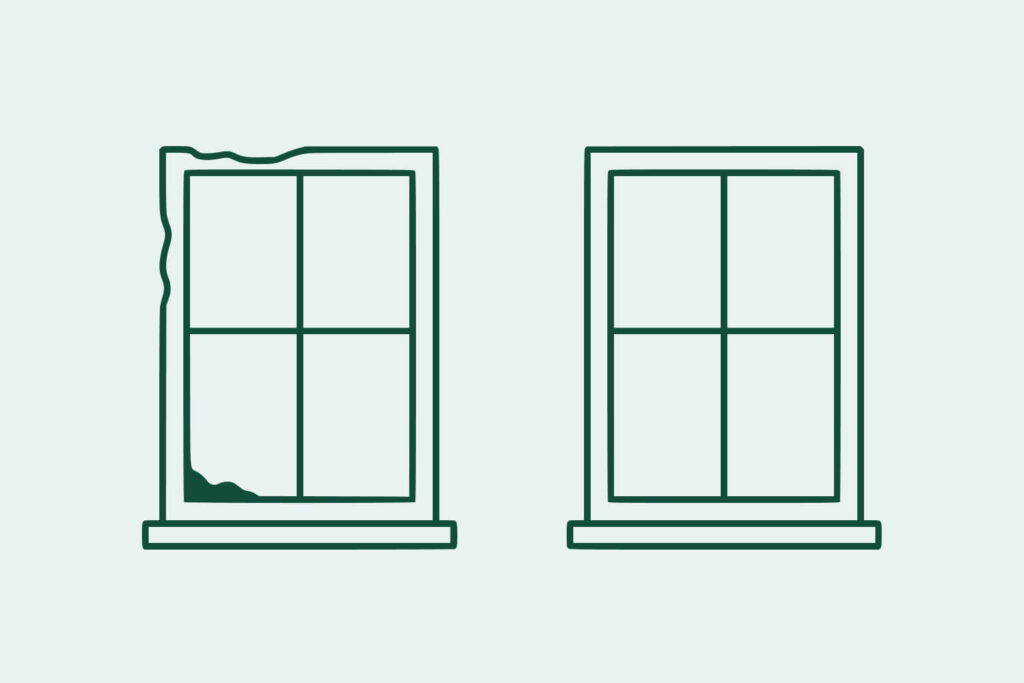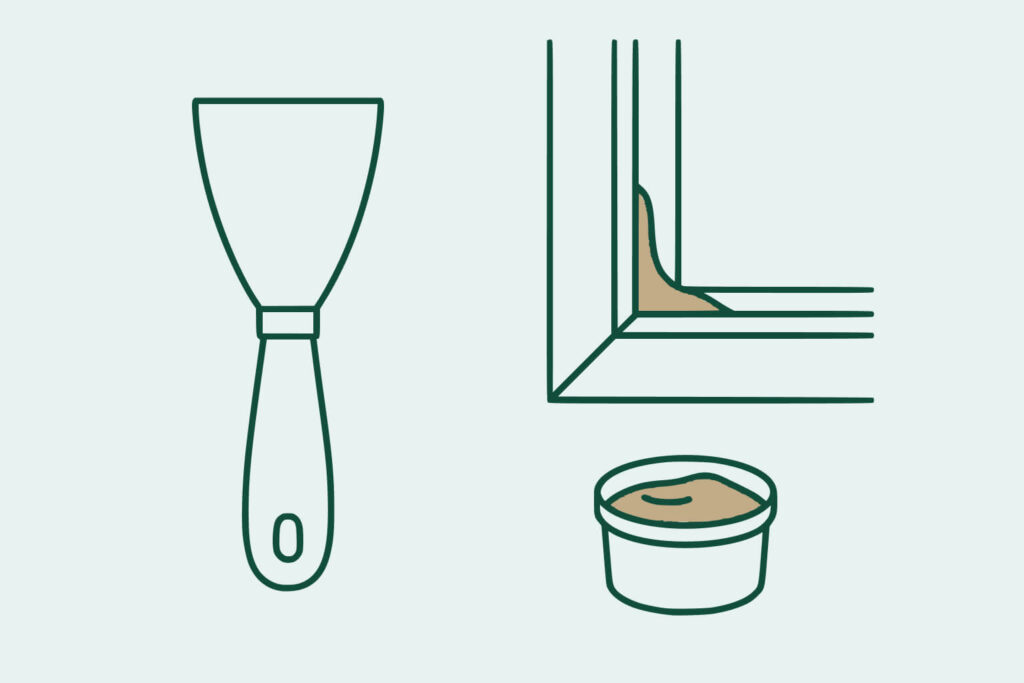Timber Window Restoration vs Replacement: Making the Right Choice
When faced with deteriorating timber sash windows, homeowners often find themselves at a crossroads: should they invest in restoration or opt for complete replacement? This decision can significantly impact not only your immediate budget but also your property’s long-term value, character, and environmental footprint. Understanding the factors that influence this choice will help you make an informed decision that aligns with your priorities and circumstances.
The choice between restoration and replacement isn’t always straightforward, as it depends on numerous variables including the current condition of your windows, your budget constraints, conservation requirements, and long-term plans for your property. Many homeowners assume that replacement is the only viable option when windows show signs of deterioration, but professional restoration can often breathe new life into even severely damaged timber windows.
Making the right choice requires a thorough understanding of what each option entails, the costs involved, and the benefits each approach offers. Whether you’re dealing with common window problems or considering a comprehensive upgrade of your home’s windows, this guide will help you navigate the decision-making process with confidence.
Assessing Your Timber Windows’ Condition
The first step in deciding between restoration and replacement is conducting a thorough assessment of your windows’ current condition. This evaluation should examine both the structural integrity and the operational functionality of each window, as these factors will significantly influence the viability and cost-effectiveness of restoration.
Begin by examining the timber frame for signs of rot, decay, or structural damage. Use a sharp knife or awl to probe areas that appear soft or discoloured, paying particular attention to the window sill, bottom rail, and any joints where water might accumulate. Healthy timber should feel firm and solid, whilst rotted wood will feel soft and may crumble under pressure. Small areas of surface rot can often be repaired economically, but extensive structural damage may make replacement more cost-effective.
Evaluate the condition of the sash mechanism, including the cords, pulleys, and counterbalance weights. Broken sash cords are a common issue that’s relatively straightforward to repair, but if the pulley wheels are damaged or the weight chambers have structural problems, restoration costs can escalate quickly. Check whether the sashes operate smoothly and maintain their position when opened – windows that slam shut or won’t stay open indicate mechanical problems that need addressing.
Examine the glazing and putty condition throughout all windows. Cracked or missing putty not only looks unsightly but also allows water ingress that can lead to timber rot. Whilst putty replacement is a standard part of most restoration projects, extensive glazing problems or non-standard glass sizes can add complexity and cost to restoration work.
Consider the overall alignment and squareness of the window frames. Severely twisted or distorted frames may indicate structural movement in the building or fundamental problems with the window construction. Minor alignment issues can usually be corrected during restoration, but major distortion might necessitate replacement.
The Case for Restoration: Preserving Heritage and Value
Timber window restoration offers numerous advantages that make it an attractive option for many homeowners, particularly those with period properties where maintaining authentic character is important. Understanding these benefits will help you evaluate whether restoration aligns with your priorities and circumstances.
Cost Effectiveness is often the most compelling argument for restoration. Professional restoration typically costs 40-60% less than high-quality replacement windows, making it an attractive option for homeowners working within budget constraints. Even when restoration costs approach replacement prices, the superior longevity of restored original windows often makes them more cost-effective over the long term.
Restored timber windows, when properly maintained, can last another 50-100 years or more, representing exceptional value for money. The quality of timber used in original construction is often superior to that available today, as old-growth timber has tighter grain patterns and greater durability than modern alternatives.
Heritage Preservation represents another significant advantage of restoration. Original timber windows are integral to the character and authenticity of period properties. Replacing them with modern alternatives, even high-quality reproductions, inevitably changes the building’s appearance and can impact its historical significance.
For properties in conservation areas or with listed building status, restoration may be the only permissible option. Planning authorities typically favour restoration over replacement as it maintains the building’s historical integrity and contributes to the preservation of our built heritage.
Environmental Benefits make restoration an increasingly attractive option in our environmentally conscious era. Restoring existing windows avoids the environmental impact of manufacturing new frames and disposing of old ones. The embodied energy in existing timber windows represents a significant resource that restoration preserves rather than wastes.
Additionally, restored timber windows can achieve excellent thermal performance when combined with appropriate draught proofing measures, often matching or exceeding the performance of replacement windows at a fraction of the environmental cost.
Superior Materials and Craftsmanship distinguish many original timber windows from modern alternatives. Historical windows were often constructed from slow-grown, dense timber using traditional joinery techniques that create exceptionally durable structures. The quality of original ironmongery, including pulleys, catches, and hinges, is frequently superior to modern mass-produced alternatives.
When Replacement Makes Sense
Despite the many advantages of restoration, there are circumstances where replacement represents the more practical or cost-effective solution. Recognising these situations will help you make realistic decisions about your windows’ future.
Extensive Structural Damage can make restoration uneconomical or technically unfeasible. If more than 40-50% of the timber frame requires replacement due to rot or structural failure, the cost of restoration may approach or exceed replacement costs whilst still leaving you with a partially original window.
Windows that have been severely modified or poorly repaired in the past may have lost their structural integrity or authentic character to the extent that restoration cannot fully address the problems. Multiple layers of inappropriate repairs can sometimes make restoration more complex and expensive than starting fresh.
Modern Performance Requirements may necessitate replacement in certain situations. Whilst restored windows can achieve good thermal performance, they may not meet the stringent requirements of some modern building standards or energy efficiency programmes. If you’re undertaking a comprehensive energy retrofit or need to meet specific performance criteria, replacement might be necessary.
Security considerations may also favour replacement, particularly in high-risk areas where modern locking systems and laminated glazing are essential. Whilst security improvements can be incorporated into restoration projects, the modifications required may compromise the window’s authenticity or structural integrity.
Budget and Time Constraints sometimes make replacement the more practical option. Restoration projects can be complex and time-consuming, particularly if multiple windows require attention. If you need immediate improvements or are working to tight deadlines, replacement may offer a more predictable timeline and outcome.
The Restoration Process Explained
Understanding what restoration involves will help you evaluate whether this approach suits your circumstances and expectations. Professional restoration is a skilled process that requires expertise in traditional building techniques and materials.
The restoration process typically begins with careful removal of the sashes from the frame, allowing access to all components for detailed assessment and repair. This disassembly reveals problems that may not be apparent from external inspection and allows for comprehensive restoration of all elements.
Timber repairs involve cutting out rotted or damaged sections and splicing in new timber using traditional joinery techniques. Skilled craftsmen match the species, grain pattern, and dimensions of the original timber to ensure seamless repairs that maintain the window’s structural integrity and appearance.
The sash mechanism receives attention during restoration, with sash cords replaced, pulleys serviced or replaced, and counterbalance weights adjusted to ensure smooth operation. This mechanical restoration is crucial for long-term functionality and user satisfaction.
Glazing work typically involves removing old putty, cleaning and re-puttying all glass panes using appropriate materials and techniques. This process not only improves appearance but also creates effective weather seals that protect the timber from moisture ingress.
Surface preparation and decoration complete the restoration process, with multiple coats of appropriate primer and paint applied to protect the timber and restore the window’s appearance. The choice of paint system is crucial for longevity and should be compatible with the timber and existing decorative scheme.
Cost Comparison: Restoration vs Replacement
Understanding the financial implications of each option is crucial for making informed decisions. Costs can vary significantly depending on the scope of work required, the quality of materials chosen, and local labour rates.
Professional restoration typically costs between £400-800 per window for standard sash windows, depending on the extent of repairs required. This includes timber repairs, mechanical restoration, reglazing, and decoration. Windows requiring extensive structural repairs may cost more, but rarely exceed £1,000-1,200 per window.
High-quality replacement timber sash windows typically cost £800-1,500 per window, including installation but excluding any structural modifications that may be required. Bespoke windows or those requiring special features can cost significantly more, particularly for non-standard sizes or heritage specifications.
However, cost comparison shouldn’t focus solely on initial expenditure. Restored original windows, when properly maintained, often outlast replacement windows and may require less frequent major maintenance. The superior quality of original timber and traditional construction methods contributes to exceptional longevity.
Consider also the potential impact on property values. Well-restored original windows typically add more value to period properties than replacements, as they maintain the building’s authenticity and character. This value premium can partially or fully offset the restoration costs.
Finding Qualified Restoration Specialists
The success of any restoration project depends heavily on the skills and experience of the craftsmen undertaking the work. Finding qualified specialists who understand traditional building techniques and materials is crucial for achieving satisfactory results.
Look for companies with specific experience in timber window restoration rather than general building contractors. Restoration requires specialised knowledge of traditional joinery techniques, appropriate materials, and conservation principles that general builders may not possess.
Check credentials and ask for references from previous clients, particularly those with similar properties or conservation requirements. A reputable restoration specialist will be happy to provide examples of their work and put you in touch with satisfied customers.
Ensure any potential contractors understand the importance of using appropriate materials and techniques. Traditional linseed oil paints, lime mortars, and natural putties may be necessary for authentic restoration, and contractors should be familiar with these materials and their application.
For properties with conservation constraints, verify that contractors have experience working within planning restrictions and understand the requirements for listed building consent or conservation area approval.
Planning and Conservation Considerations
Before making final decisions about restoration or replacement, consider any planning or conservation constraints that may apply to your property. These requirements can significantly influence your options and should be investigated early in the decision-making process.
Listed buildings typically require consent for any alterations to windows, and planning authorities generally favour restoration over replacement. Even minor changes, such as altering glazing patterns or hardware, may require approval, so consult with your local conservation officer before proceeding.
Properties in conservation areas may also face restrictions on window alterations, even if the building itself isn’t listed. Conservation area guidelines often specify requirements for maintaining the character and appearance of the area, which may favour restoration approaches.
Some local authorities offer grants or financial incentives for heritage building restoration, including window restoration projects. Research available funding opportunities, as these can significantly improve the cost-effectiveness of restoration compared to replacement.
Long-Term Maintenance Considerations
Both restored and replacement windows require ongoing maintenance to ensure continued performance and longevity. Understanding these requirements will help you make realistic decisions about long-term costs and commitments.
Restored timber windows benefit from regular maintenance programmes that include periodic decoration, putty maintenance, and mechanical adjustments. Whilst this represents an ongoing commitment, the maintenance requirements are generally predictable and manageable.
Replacement windows also require maintenance, though the intervals may be different. Modern materials and construction methods may reduce some maintenance requirements but can create others, such as the need for specialised replacement parts or proprietary maintenance products.
Consider your long-term plans for the property when evaluating maintenance commitments. If you plan to remain in the property for many years, the ongoing maintenance of restored windows becomes a manageable part of home ownership. However, if you’re planning to sell in the near future, the immediate impact and reduced maintenance requirements of replacement might be more attractive.
Making Your Decision
The choice between restoration and replacement ultimately depends on your specific circumstances, priorities, and constraints. There’s no universally correct answer, but a systematic evaluation of the factors discussed will help you make the right choice for your situation.
If your windows have good structural integrity, you value authenticity and heritage preservation, and you’re comfortable with ongoing maintenance commitments, restoration is likely the better choice. The cost savings, environmental benefits, and heritage value make restoration attractive for most period properties.
If your windows have extensive structural damage, you need to meet specific performance requirements, or you prefer the predictability and reduced maintenance of new windows, replacement may be more appropriate. Modern replacement windows can offer excellent performance and reduced maintenance requirements, though at higher initial cost.
Consider seeking professional advice from experienced window restoration specialists who can provide detailed assessments of your windows’ condition and realistic cost estimates for restoration work. This professional input can be invaluable in making informed decisions about your windows’ future.
Remember that the decision doesn’t have to be all-or-nothing. Some windows in your property might be suitable for restoration whilst others require replacement. A mixed approach can be cost-effective and practical, particularly in properties where window conditions vary significantly.




